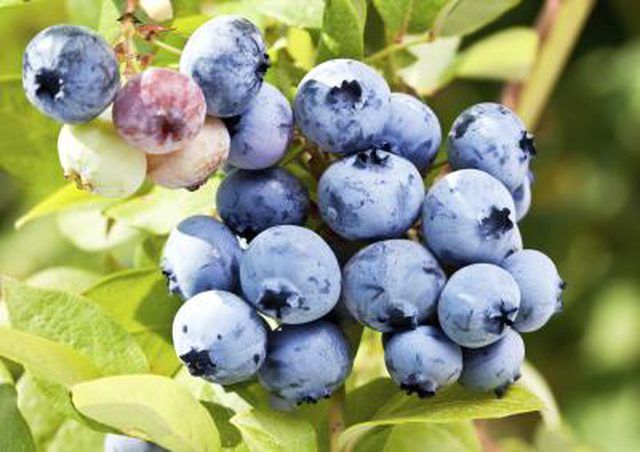Bulbs
Flower Basics
Flower Beds & Specialty Gardens
Flower Garden
Garden Furniture
Garden Gnomes
Garden Seeds
Garden Sheds
Garden Statues
Garden Tools & Supplies
Gardening Basics
Green & Organic
Groundcovers & Vines
Growing Annuals
Growing Basil
Growing Beans
Growing Berries
Growing Blueberries
Growing Cactus
Growing Corn
Growing Cotton
Growing Edibles
Growing Flowers
Growing Garlic
Growing Grapes
Growing Grass
Growing Herbs
Growing Jasmine
Growing Mint
Growing Mushrooms
Orchids
Growing Peanuts
Growing Perennials
Growing Plants
Growing Rosemary
Growing Roses
Growing Strawberries
Growing Sunflowers
Growing Thyme
Growing Tomatoes
Growing Tulips
Growing Vegetables
Herb Basics
Herb Garden
Indoor Growing
Landscaping Basics
Landscaping Patios
Landscaping Plants
Landscaping Shrubs
Landscaping Trees
Landscaping Walks & Pathways
Lawn Basics
Lawn Maintenance
Lawn Mowers
Lawn Ornaments
Lawn Planting
Lawn Tools
Outdoor Growing
Overall Landscape Planning
Pests, Weeds & Problems
Plant Basics
Rock Garden
Rose Garden
Shrubs
Soil
Specialty Gardens
Trees
Vegetable Garden
Yard Maintenance
Blueberry Plants for Zone 3 or 4
Blueberry Plants for Zone 3 or 4. U.S. Department of Agriculture plant hardiness zones 3a through 4b cover areas that experience cold winters, with annual extreme minimum temperatures as low as minus 40 degrees Fahrenheit for zone 3a. Not all blueberry species (Vaccinium spp.) will survive such extreme temperatures. The blueberries most likely to...

U.S. Department of Agriculture plant hardiness zones 3a through 4b cover areas that experience cold winters, with annual extreme minimum temperatures as low as minus 40 degrees Fahrenheit for zone 3a. Not all blueberry species (Vaccinium spp.) will survive such extreme temperatures. The blueberries most likely to thrive in USDA zones 3 through 4 are varieties of highbush blueberry (Vaccinium corymbosum), hardy in USDA zones 3 through 7 or 8, depending on variety. Lowbush blueberry (Vaccinium angustifolium), hardy in USDA zones 2 through 5 or 6, depending on variety, will also survive, though it's not widely available.
Blueberry Basics
No matter the climate zone, blueberry bushes thrive best in sunny locations with well-drained acidic soil, generally in the pH range of 4.5 to 5.5. Plant new bushes in late spring. Determine soil pH using a test kit sold at garden centers. Alkaline soils can be amended with commercial products such as organic acidifier containing 30 percent sulfur. Apply in spring, using 1.25 cups per new plant or 2.5 cups per established plant. Scatter it evenly around the blueberry plants, and water thoroughly. Repeat every 60 days to reach the desired acidity level. Clay soils should be amended with organic material prior to planting the bushes.
Blueberry Categories
Highbush blueberries are classified as early, mid- or late season varieties, depending on the time in early summer when the fruits ripen. In very cold winter climates like USDA zones 3 and 4, early season blueberries, which flower earlier in spring to fruit earlier in summer, may be damaged by frosts that occur while the plant is blooming. Damaged blooms means little or no fruit. Gardeners, especially those in zone 3, may opt for mid- or late season varieties to avoid this problem. If late spring frosts threaten your flowering bushes, cover them overnight with blankets, burlap or other material.
Early Season Choices
Plant early season blueberries in protected locations to help prevent cold weather damage. "Spartan" (Vaccinium corymbosum "Spartan") is an early blueberry that flowers late enough to avoid most blossom-destroying frosts. Complete hardiness information is scarce, but according to Courtney Weber, Associate Professor of Horticulture at Cornell University, it's hardy to minus 25 F, which makes it a good choice for USDA zone 4b and possibly 4a, with protection. "Bluetta" (Vaccinium corymbosum "Bluetta") is hardy down to minus 35 F, making it hardy in USDA zones 4, 3b and possibly 3a, with protection.
Mid- and Late Season Choices
"Chippewa" (Vaccinium "Chippewa"), a compact mid-season variety, is a hybrid of highbush and lowbush species. According to Dr. Weber, it's hardy to minus 35 F. Michael Dirr, Professor Emeritus at the University of Georgia, characterizes the highbush/lowbush hybrids as being hardy to minus 40 F. Either way, "Chippewa" will survive in USDA zones 3b and 4, as well as 3a, with protection. Late season "Jersey" (Vaccinium corymbosum "Jersey") is hardy to minus 35 F, according to Dr. Weber, making it suitable for the same zones.